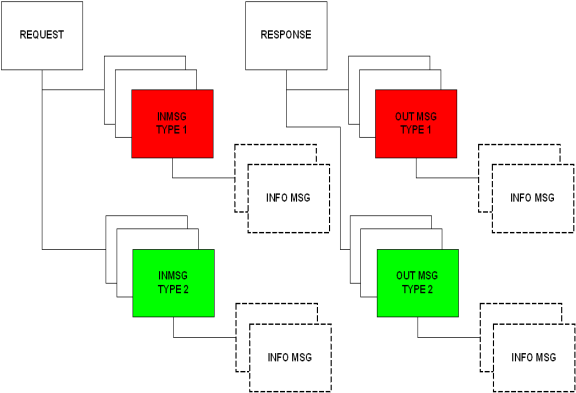The Anthology API framework uses messages to send and retrieve data. The general structure of these messages follows these guidelines:
-
A request message contains an array of in-messages. Each in-message might contain additional information message structures, which could be zero, one, or many.
-
An in-message corresponds to a transaction. A request with multiple in-messages results in multiple transactions.
-
A request may contain more than one kind of message. The messages are routed to their corresponding business processes (transactions).
-
There are many different requests defined in the API framework, each one may have one or more arrays of in-messages.

All Anthology APIs support individual transactions. Some of the APIs also support batch transactions. For example, Grades and Attendance Web service methods have corresponding GradesBatch and AttendanceBatch Web methods.
-
An individual type of request may contain many transactions, but each one is processed individually. If any transaction encounters an error, it will be reported in the corresponding out-message. Transactions that do not contain errors will be processed and committed.
-
Batch types of request will roll back all transactions if any errors are encountered on any in-message.
-
The only difference between an individual and a batch request is calling a different method in the Web service. The message structures are identical.
-
The response message structure is similar. The amount of data sent or returned depends on the kind of API called. These usually fall into two categories, Post or Get.
-
Each in-message in a request will have a corresponding out-message in the response.